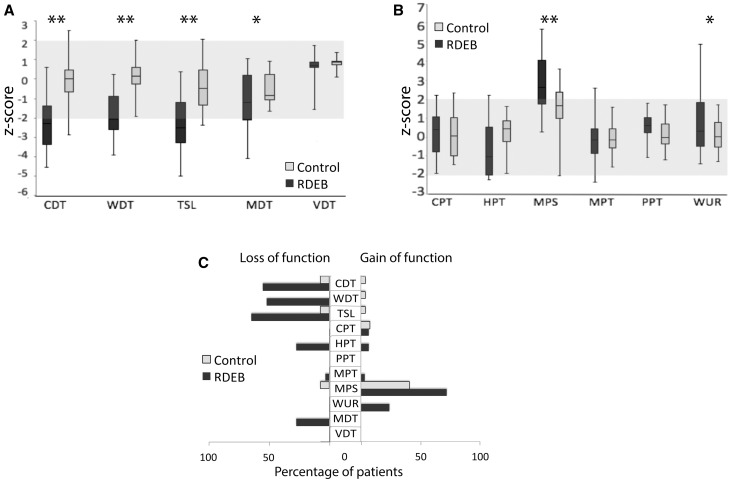Figure 1.
Somatosensory profiles. Somatosensory profiles determined with QST in the dorsum of the foot (S1 dermatome) of patients with RDEB (dark grey) and healthy volunteers (light grey). Data are expressed as mean z-scores with standard deviations and the grey area indicates the normal range of ±2 SD of normative data. (A) Patients with RDEB have a significant loss of function in cold and warm detection thresholds compared to control subjects. They also have a reduced ability to differentiate temperature changes (e.g. thermal sensory limen). A small but significant decrease in mechanical detection thresholds was observed, but no patients present loss or gain in vibration detection thresholds. (B) RDEB patients had increased pain sensibility compared to control participants, which could be seen as an altered heat pain sensitivity, altered mechanical pain sensitivity and altered wind up ratio. No differences in cold pain thresholds were found between both groups. There was also no difference in mechanical and pressure pain thresholds. (C) Percentage of patients with value outside the normal range. To the left side are shown the loss-of-function (values < −2). To the right side are shown the gain of function (values > 2). *P < 0.05, **P < 0.001. CDT = cold detection threshold; CPT = cold pain threshold; HPT = heat pain threshold; MDT = mechanical detection threshold; MPS = mechanical pain sensitivity; MPT = mechanical pain threshold; PPT = pressure pain threshold; TSL = thermal sensory limen; VDT = vibration detection threshold; WDT = warm detection threshold; WUR = wind up ratio.

